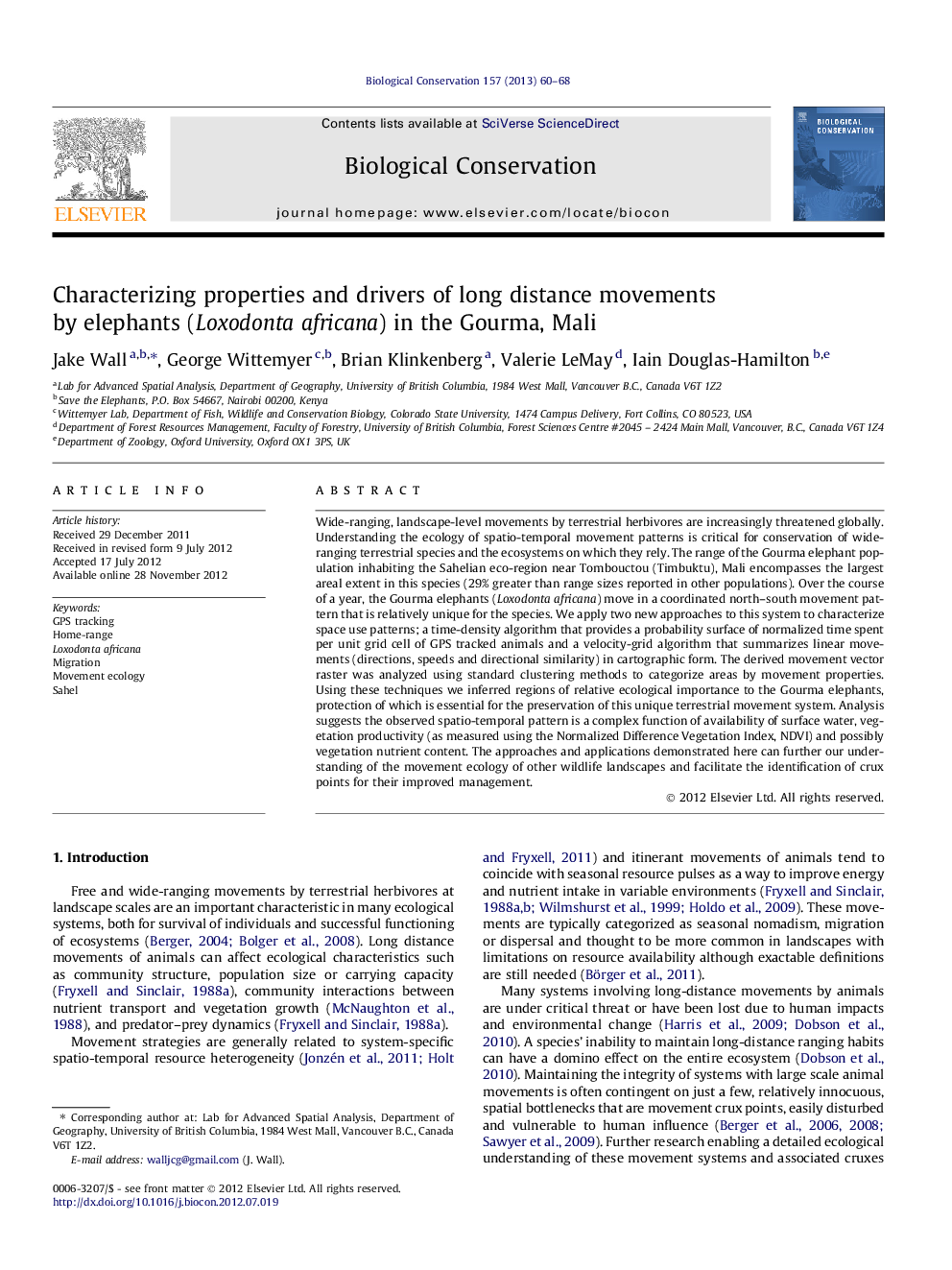| Article ID | Journal | Published Year | Pages | File Type |
|---|---|---|---|---|
| 4385189 | Biological Conservation | 2013 | 9 Pages |
Wide-ranging, landscape-level movements by terrestrial herbivores are increasingly threatened globally. Understanding the ecology of spatio-temporal movement patterns is critical for conservation of wide-ranging terrestrial species and the ecosystems on which they rely. The range of the Gourma elephant population inhabiting the Sahelian eco-region near Tombouctou (Timbuktu), Mali encompasses the largest areal extent in this species (29% greater than range sizes reported in other populations). Over the course of a year, the Gourma elephants (Loxodonta africana) move in a coordinated north–south movement pattern that is relatively unique for the species. We apply two new approaches to this system to characterize space use patterns; a time-density algorithm that provides a probability surface of normalized time spent per unit grid cell of GPS tracked animals and a velocity-grid algorithm that summarizes linear movements (directions, speeds and directional similarity) in cartographic form. The derived movement vector raster was analyzed using standard clustering methods to categorize areas by movement properties. Using these techniques we inferred regions of relative ecological importance to the Gourma elephants, protection of which is essential for the preservation of this unique terrestrial movement system. Analysis suggests the observed spatio-temporal pattern is a complex function of availability of surface water, vegetation productivity (as measured using the Normalized Difference Vegetation Index, NDVI) and possibly vegetation nutrient content. The approaches and applications demonstrated here can further our understanding of the movement ecology of other wildlife landscapes and facilitate the identification of crux points for their improved management.
Highlight► Largest home-range areal extent for African elephants (Loxodonta africana). Elephants showed a unique circular movement pattern. ► We present a new time-based animal home-range metric. ► We present a new movement-based velocity-grid analytical approach. ► We discuss ecological factors driving movement spatio-temporal patterns.
